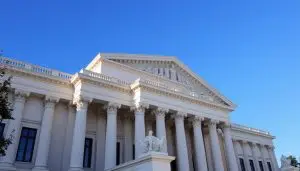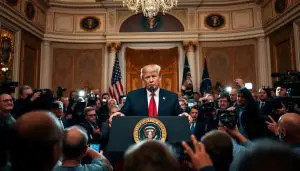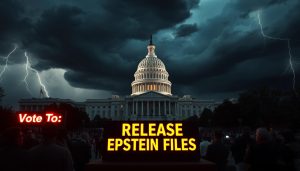Judge’s Home Destroyed After Ruling Against Trump
A shocking act of violence as a judge’s home is destroyed after issuing a ruling against Trump, raising concerns over judicial safety.
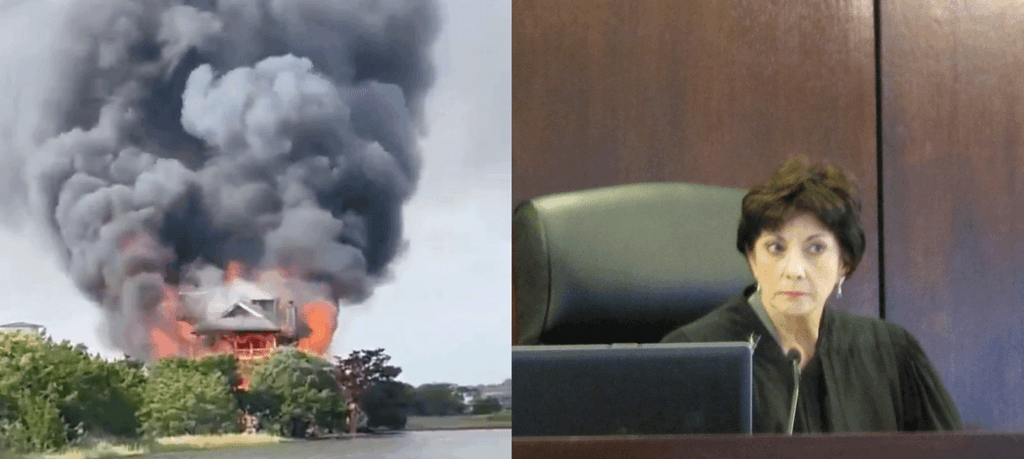
Judge Diane Goodstein's house caught fire. | X/ AP Photo
Click to summarize this article.
Judge’s Home Destroyed After Ruling Against Trump: South Carolina Circuit Judge Diane Goodstein is in the news after her home caught fire. The blaze happened just days after she made a ruling against the Trump administration. This has sparked a considerable debate about threats to judges and the safety of the legal system.
Video on X shows the fire engulfing her home, with thick smoke filling the sky. This has raised questions about safety in a tense political climate.
Police say they are investigating the cause of the fire, but don’t believe it was intentional. Three people were hurt, including her son and her husband, a former state Senator. For more on the fire and the investigation, see this report on the Edisto Island blaze.
The ruling that sparked the fire was about voter data access. It drew considerable attention and online criticism. The phrase “Judge’s Home Destroyed After Ruling Against Trump” has become a symbol of the moment.
The investigation serves as a test for the integrity of the legal system. Courts play a crucial role in times of volatility. Now, there’s a focus on protecting judges while maintaining a fair and independent legal process.
Judge’s Home Destroyed After Ruling Against Trump Key Takeaways
- A fire destroyed Judge Diane Goodstein’s South Carolina home days after a ruling that angered the Trump administration.
- Three people were injured; early statements say no evidence of foul play, while the cause remains under investigation.
- Viral video on X shows the home engulfed in flames, adding urgency to news coverage across the United States.
- The episode renews focus on judicial intimidation, judicial threats, and judges’ concerns about their security.
- The case raises broader questions about the safety of the legal system in politically charged disputes.
- Public scrutiny intensified after the voter data ruling was reversed, fueling sharp debate online.
Breaking News Context and What Happened
Breaking news from South Carolina has captured the attention of everyone. People are trying to understand what happened at Judge Diane Goodstein’s home. They are examining public records and witness accounts to determine how these factors impact the judge’s security and the safety of the legal system.
Incident overview: home engulfed in flames and injuries reported
A video on X showed the house on fire with a lot of smoke. Three people got hurt while they were trying to get out. Judge Goodstein’s son and her husband, a former senator, were among the injured. He jumped from a window to escape.
The judge was not there. Neighbors discussed the chaos as firefighters rushed to the scene to help. The damage is enormous, and some think the house was vandalized.
Authorities’ early findings: no evidence of foul play yet, cause under investigation
Local investigators are attempting to determine the cause of the fire. They say they haven’t found any signs of foul play yet. They are examining the damage to determine the cause.
They are being cautious due to the damage. This highlights the importance of safety, especially for judges. They want to make sure the legal system is safe for everyone.
Timing amid judicial threats and heightened political tensions
The fire occurred after a significant ruling that garnered considerable attention. People were talking about it on X and on TV. There have been threats to the judiciary for weeks, sparking widespread concern about the safety of judges.
There’s a lot of debate about power and the courts. For more information, check out this legal update that covers the latest cases and reactions.
Additional keywords to explore: judge’s home attack, home vandalized, judicial threats
There are different theories about what happened, like a possible attack or an accident. However, officials say they are not yet certain. Leaders are trying to maintain calm until they have more information.
This situation illustrates how quickly news can spread and how it can cause widespread concern. It also highlights the need for judicial impartiality and the importance of waiting for facts before reaching a conclusion.
Judge’s Home Destroyed After Ruling Against Trump
They watched a routine court fight turn into a national flashpoint. A judge’s home was destroyed after ruling against Trump. This highlighted the stakes for judicial independence and sparked a debate on the balance of power and accountability.
The ruling: blocking access to South Carolina’s voter registration database
Judge Diane Goodstein blocked the Trump administration’s access to South Carolina’s voter database. Her order slowed a federal effort to control election systems. This move sparked intense interest and a backlash against Trump’s ruling.
On appeal, the order was reversed, restoring federal access. This swift change highlighted the fragility of safeguards. It also raised warnings about political retaliation against judges who challenge executive power.
Reversal and public backlash: online criticism and named call-outs
After the reversal, Assistant Attorney General Harmeet Dhillon criticized Goodstein on X, sparking a wider storm of online reactions. The backlash against Trump’s ruling intensified, with increased scrutiny of the bench.
Advocates warned that spotlight tactics could normalize judiciary intimidation. For those following reform debates, this guide to judicial change offers context on how courts adapt under pressure.
Reported threats: weeks of intimidation preceding the fire
Time reported that Goodstein faced weeks of death threats before the fire. These messages, documented over time, formed a grim backdrop. Investigators reviewed the damage to her residence.
When a judge’s home is attacked amid rising fury, the signal to others on the bench is chilling. This pattern deepens concerns about judicial intimidation and the erosion of judicial independence in an era of viral outrage.
Related national context: disputes over federal deployments and court checks
Across the country, disputes over federalized National Guard deployments in Portland drew sharp reactions. Judge Karin J. Immergut, a Trump appointee, temporarily curbed those moves. Stephen Miller blasted the decision as an egregious affront to constitutional order, intensifying a narrative of political retaliation against judicial decisions.
At the same time, Illinois and Chicago challenged federal deployment tactics in court. Amid these battles, campaign-style moments kept tensions high. A judge’s home destroyed after ruling against Trump becomes more than a headline; it becomes a warning about how thin the line can be between civic debate and pressure that threatens judicial independence.
Broader Pattern: Judiciary Independence and Security Concerns
Courts across the country face a tense climate. This climate tests the judiciary’s independence and the safety of the legal system. Judges must balance their rulings with growing security concerns, all while public debates spill into digital spaces where threats often intensify.
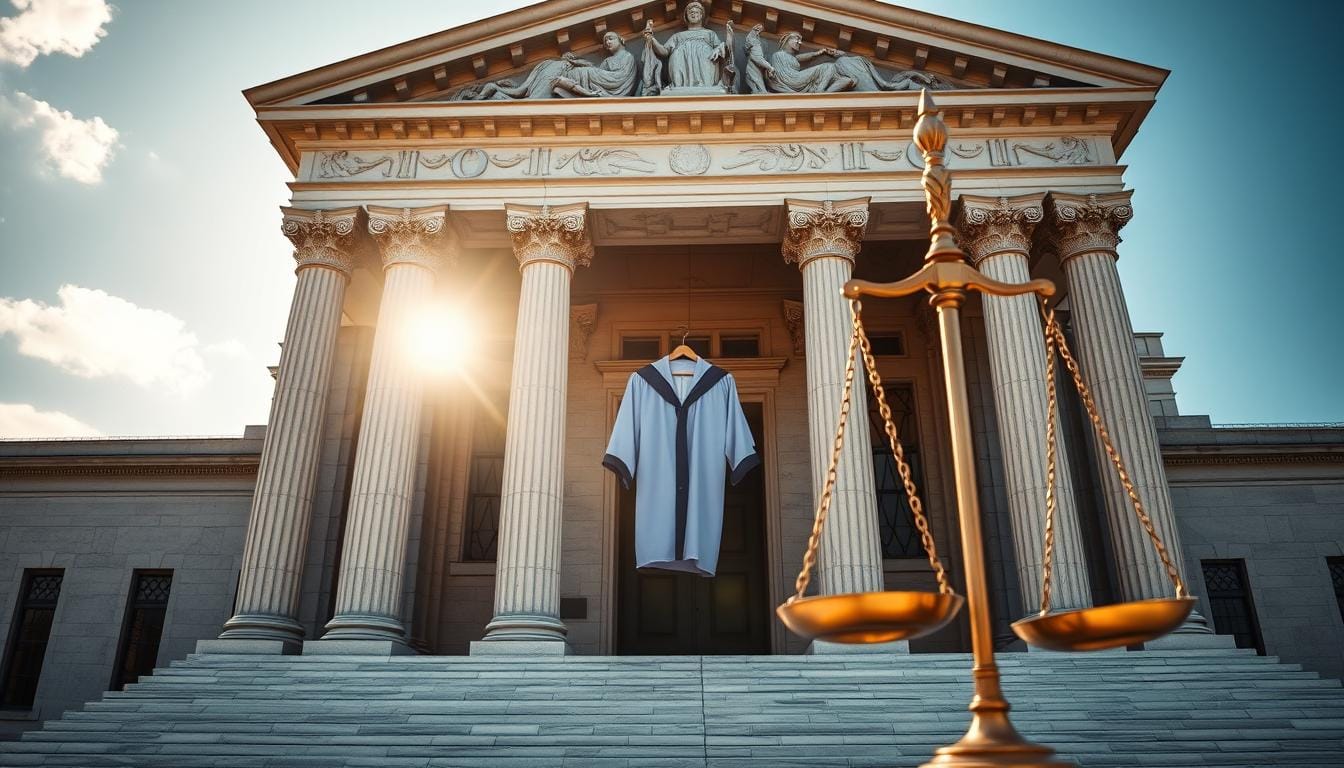
Judges under fire: online denunciations and rising judicial threats
The Goodstein case illustrates how a judge’s name can become widely known online following a sensitive ruling. Harmeet Dhillon’s post on X brought more attention, followed by warnings. These warnings echo the risks of attacks on judges’ homes and political retaliation.
Platforms that reward outrage make targeted call-outs spread faster than facts. When intimidation trends, the judiciary’s independence suffers. Chambers faced doxxing, harassment, and frightening messages.
Federal power clashes: National Guard deployment blocks and executive pushback
Judicial checks on federal power are becoming more visible. Judge Karin J. Immergut’s order paused federalized National Guard deployments, highlighting concerns about state sovereignty. Stephen Miller argued that a district court cannot limit the president’s power to deploy troops, demonstrating sharp executive pushback.
Illinois and Chicago’s parallel litigation over deployment authority added to the disputes. For those following these battles, analysis of high-stakes immunity questions shows how separation-of-powers fights shape daily decisions.
Public narratives and safety: legal system safety and judiciary independence at stake
Alarmist labels like “domestic terrorism” or “invasion” set a harsh tone around enforcement and protest. In Chicago, Alderperson Jessie Fuentes’s detention after raising due process concerns marked how frontline incidents intersect with court orders and civil rights.
Amid these narratives, judges face rising judicial threats and political retaliation. This forces them to take extra precautions at homes and courthouses. The strain on the legal system’s safety is real, reshaping how people approach hearings, filings, and basic security planning.
Political rhetoric escalation and its chilling effect on courts
Polarized statements, from campaign rallies to solemn ceremonies, fuel a cycle where legal disputes become partisan tests. Rhetoric that dehumanizes opponents or glorifies spectacle, including talk of splashy events at the White House, widens the gap between civic norms and courtroom decorum.
As attention turns to ongoing cases, coverage of the latest updates on court battles reveals how judges now factor public scrutiny, the risks of attacks on judges’ homes, and judges’ security concerns into an already complex process. When that pressure mounts, judicial independence faces its most complex trials.
| Pressure Source | Recent Example | Risk to Courts | Impact on Judiciary Independence |
|---|---|---|---|
| Online denunciations | Harmeet Dhillon’s call-out of Judge Goodstein on X | Targeted harassment; judicial threats | Chill’s rulings escalate political retaliation against the judge |
| Executive pushback | Stephen Miller disputes limits on deployment authority | Institutional clashes; amplified security concerns | Weakens guardrails; pressures the legal system’s safety |
| Public safety narratives | Detention of Alderperson Jessie Fuentes during due process dispute | Heightened tension near court-related actions | Strains court-community trust; raises judge’s security concerns |
| Political spectacle | Calls for high-profile events on White House grounds | Media saturation; personal targeting of jurists | Courts weigh optics alongside law, risking judiciary independence |
Judge’s Home Destroyed After Ruling Against Trump: Conclusion
Judge Diane Goodstein’s case highlights the dangers of high-stakes rulings in a volatile climate. The incident has sparked debates on judicial intimidation and the safety of the legal system. Despite no evidence of foul play, the cause of the fire is under investigation.
Threats against judges and their families have been reported in the weeks leading up to the fire. This shows the risks they face. The timeline is key. Following the decision on voter registration data, a backlash against Judge Goodstein ensued.
Public denunciations online, fueled by major platforms and politicians, can pose real dangers. In such times, the independence of the judiciary is critical. It ensures fair rulings, even in the most challenging cases.
National power struggles add to the tension. Disputes over National Guard deployments and court oversight are happening alongside other big cases. The mix of politics and spectacle increases the risk of threats against judges.
For more on how policy tensions shape public debate, see this background on immigration enforcement dynamics.
Protecting the rule of law is more than just words. It requires better security, careful words, and respect for the courts. The lessons from Judge Goodstein’s case are clear: we must reduce intimidation, protect the legal system, and uphold judicial independence.
Judge’s Home Destroyed After Ruling Against Trump FAQ
What happened to Judge Diane Goodstein’s home, and were there injuries?
A massive fire destroyed Judge Diane Goodstein’s home in South Carolina. A video on X shows the house engulfed in flames and smoke. Three people were injured, including her son and husband, former state Senator Arnold Goodstein. He escaped by jumping from a window. The judge was not home at the time.
Have authorities found evidence of foul play or an explosion?
Local officials say the cause is under investigation. So far, no evidence of foul play has been found. There is also no official word on an explosion.
Why did the fire draw national attention?
The fire happened days after Judge Goodstein made a ruling against the Trump administration. This raised concerns about intimidation and threats against judges. The timing raised suspicions that it was a political retaliation.
What did Judge Goodstein rule in the voter registration case?
She blocked the Trump administration’s access to South Carolina’s voter database. Her decision was later overturned, allowing the administration to access the database.
How did public figures respond to her ruling and its reversal?
After the reversal, Assistant Attorney General Harmeet Dhillon criticized Judge Goodstein on social media platform X. This criticism sparked further online backlash. It also raised concerns about the judge’s safety.
Were there threats against Judge Goodstein before the fire?
Yes, Time reported she received death threats for weeks before the fire. These threats highlight the dangers to judges when their rulings are politicized.
What broader legal and political context surrounds this incident?
Courts have recently challenged executive actions. For example, U.S. District Judge Karin J. Immergut blocked federalized National Guard deployments. Stephen Miller denounced this ruling on X. Illinois, and Chicago also filed suits against the deployments. These cases show the power struggles between the federal government and courts.
How does social media factor into risks for judges?
Social media can fuel intimidation and threats against judges. In high-profile cases, rumors or claims of vandalism can spread quickly. This increases pressure and security needs.
What is known about the video circulating on X?
The video shows the house engulfed in flames and smoke. It confirms the fire was fast-moving but doesn’t reveal the cause.
Did the judge or her family indicate a motive?
No motive has been confirmed. Authorities say the investigation is ongoing. They have not linked the fire to any specific threat or actor.
What other national legal flashpoints are relevant?
The Supreme Court declined petitions from Laura Loomer and Ghislaine Maxwell. This shows the court’s commitment to fairness despite controversy. Yet, heated rhetoric at events like the Navy’s 250th anniversary and plans for a UFC event at the White House reflect a combative climate.
How do these tensions affect judges’ day-to-day work?
Rising threats and concerns about political retaliation can affect judges. They must strike a balance between security and legal analysis. This challenges their independence and ability to make rulings without fear.
What steps can improve safety for the judiciary?
Better security protocols and quick threat assessment are key. Political leaders should also promote responsible discourse. Protecting judges’ privacy and responding to threats are essential for the rule of law.
Is there any evidence linking the fire to the judge’s recent ruling?
Not yet. While the timing is suspicious, officials have found no evidence of foul play. The investigation is ongoing.
Why does this case resonate beyond South Carolina?
It involves court oversight, executive power, and political rhetoric. The incident shows how national polarization can lead to threats. It raises concerns about the safety of the legal system and the independence of the judiciary.




